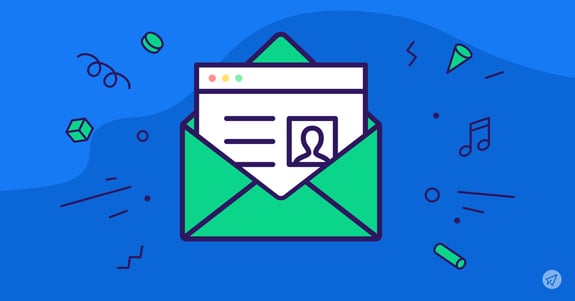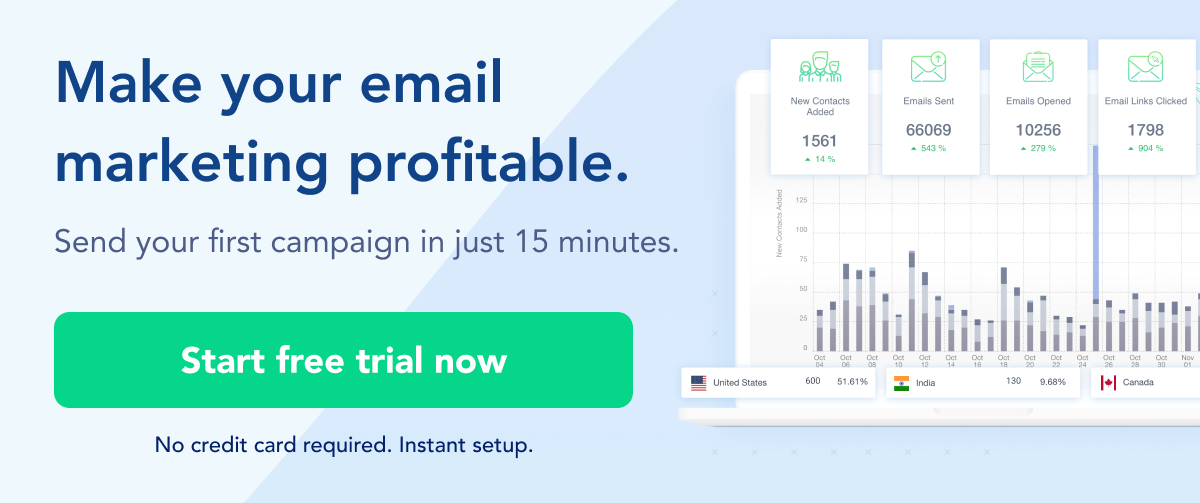Email campaigns are a cornerstone of successful outreach in the ever-changing world of online marketing. These strategies hinge on a company’s ability to understand and use analytics to their advantage. The open rate, or the percentage of sent emails opened by consumers, is critical to developing accurate data to inform the direction of a company’s marketing plan. Accurate open rate figures give marketing teams insight into how their target audience receives email campaigns.
Open rate data provides marketers with actionable information to improve their numbers on future campaigns.
Table of Contents
Understanding Email Open Rates
Email delivery is more challenging than it sounds, and it can be challenging to determine the success of a campaign without email marketing benchmarks. Knowing those benchmarks is vital to assessing a campaign’s performance while predicting future results.
Email open rate (OR) shows how many people opened a company’s email. There are two kinds of ORs:
- Total open rate is the percentage of opened emails compared to the number of emails sent. This OR includes emails that consumers open more than once.
- Unique open rate is the percentage of people who opened the email compared to the number of email messages delivered.
Marketers often use the unique open rate as it provides a more accurate representation of the number of emails an audience opens for a particular industry.
What is a Good Average Email Open Rate?
According to PayPal, a good email open rate across all industries averages 21.5-38.49%. This range is a starting point for assessing ORs; however, you must identify your industry-specific benchmark to gain more accurate and valuable insights. Calculate the average OR as follows: (total unique opens / total recipients) x 100. The resulting percentage will give your marketing department an essential key performance indicator (KPI) for that email campaign.
The average email open rates also rely heavily on their specific industry. Here are the average ORs for the top 5 industries:
- Real estate at 41.6%
- Finance at 41.4%
- Health and Fitness at 41.2%
- Manufacturing at 41.1%
- Media at 40.7%
Seeing how your open rate compares is worthwhile if your company operates in any of these industries. In addition, research to see how these rates have affected the overall performance of individual companies to create specific goals to strive for.
Key Factors that Influence Email Open Rates
The success of your email campaign rests solely on the open rate. You need consumers to open the email and read its content to generate new business and awareness. Here are the key factors that play into the success or failure of email open rates:
Value
For success in marketing, you need an audience that sees value in your message. Any email you send should have a clear purpose and call to action (CTA) that compels the recipient to open and engage with the email. Every line of the email should provide value — whether you’re updating customers about changes in your operations or prompting them to purchase your product.
Active Contacts
Every email address added to a marketing list in a company’s account has a subscriber status. Active addresses are those emails that are not unsubscribed, hard-bounced, unconfirmed, or deleted. Not regularly reviewing the proportion of active versus inactive addresses on your list can negatively impact your email open rates.
A high number of inactive users impacts a company’s email deliverability rate, which involves the success rate a marketer has of getting an email to a person’s address. When you repeatedly send emails that recipients never open, it causes internet service providers to give you a lower email reputation score. This status can also decrease inbox delivery rates, decreasing the number of emails sent to an inbox rather than a spam folder.
Subject Lines
Email open rates and subject lines are inextricably linked. You should craft compelling, witty, or memorable subject lines to catch a reader’s attention, leading to more ORs. Effective subject lines include a call to action, such as “Don’t miss this” or “You will benefit from opening this email.”
According to a Return Path report, your email subject lines should be brief and at 25 - 30 characters for the best visibility on computers and mobile devices. Short subject lines are easier to read on a smartphone, but they also stimulate curiosity in the recipient and encourage them to open the email for additional information. Consider promoting a brief offer for an event or sale in the subject line to engage your audience further.
Mobile Optimization
According to TechReport, 1.7 billion people open email from mobile devices. Your email should focus on three components for this platform: subject lines, call to action, and design elements., As mentioned, smartphones will cut off subject lines that exceed a certain character limit, so keeping it short will give readers a full picture of what your email entails.
Just as important, a call-to-action engages a reader at the end of an email. To optimize it for mobile use, make sure your call-to-action includes effective hyperlinks that can easily direct users to your social media or website. Email design elements are critical for retaining mobile readers’ attention. Compared to a typical desktop format, mobile emails should include larger text and easy-to-read fonts, as a smaller screen can misconstrue the text and make it difficult to read.
Leveraging Process Visualization Strategies
Even if everyone on a marketing team learns about the factors that may be affecting their email campaign, it can be difficult to know how to move forward. However, process visualization strategies can help everyone visualize the next steps. Marketers can begin with a simple process mapping template with mapping software. This process brings all team members together, communicates insights effectively, and simplifies complex factors.
This strategy is highly flexible, as leaders can choose a variety of visualization tools that work best for their campaign and their team. From here, marketers can feel more invested in their campaign now that it’s more tangible.
Creating Compelling Email Content
Your email content must appeal to the audience’s needs while helping your company reach its goals. Follow these steps to create compelling email content that will encourage your audience to open that message.
1. Understand the Reader
Readers want to connect with your message, and telling a story in your email is an ideal strategy to forge that connection. It should feel like a conversation and make the email a one-on-one action. You first need to understand and listen to your readers to do this. The best way to do this is by gathering data about your readers. This may involve sending out surveys now and then to understand their interests, their thoughts on your work, and anything else they would like to add.
This data lets you segment your readers into smaller groups based on shared characteristics or likes.
Although there are a variety of segmented groups, these are the most common factors
- Readers’ values
- Location
- Psychographics, interests, hobbies, or lifestyles.
Demographics and purchasing behaviors are additional reasons to personalize your audience’s emails to drive a higher open rate.
2. Be Clear and Concise
Get right to the point in your email message. According to Semrush, 20 lines of text or around 200 words is ideal based on click-through rates. You want to keep your message short, clear, and concise, as you have an average of 10 seconds to communicate your message to readers.
3. Avoid Industry Jargon
Only use jargon in your email if your audience is familiar with specific industry vocabulary and definitions. Specialized vocabulary can overwhelm readers and intimidate them. Stick to a consistent, open tone and word choice that quickly delivers the message to recipients.
4. Make the Content Skimmable
Design your content to be skimmable and make important information accessible for readers to find. The Neilsen Norman Group conducted an eye-tracking study and found that most people who open emails skim-read them. They gravitate to the headline and read the first sentence or two of the message. Customers typically scroll through the rest of the email, looking at headlines, links, and bullet point lists.
Limit the paragraph to three short sentences. Break up sections with headings and subheadings, and use bullet point lists for three or more items. Always leave space between paragraphs to avoid cluttering up the email.
5. Using Visualization Strategies
No one wants to read lengthy emails. Luckily, visuals also effectively break up the text, catch the reader’s eye, and promote click-through rates.
Always use photos focused on the email content, and consider using a color palette generator to create a subtle scheme. Infographic newsletters are ideal platforms for using pictures effectively. You can design the template and add text, icons, and link buttons to your website or social media accounts.
To Conclude
Understanding email open rate benchmarks across industries is crucial for effective email marketing strategies. By analyzing benchmarks, you gain insights into their campaign performance and set realistic goals.
Benchmarks vary across sectors, with some industries boasting higher open rates than others. Recognizing these benchmarks allows you to gauge their performance relative to industry standards, optimize subject lines and content, and enhance engagement.
-3.png)


